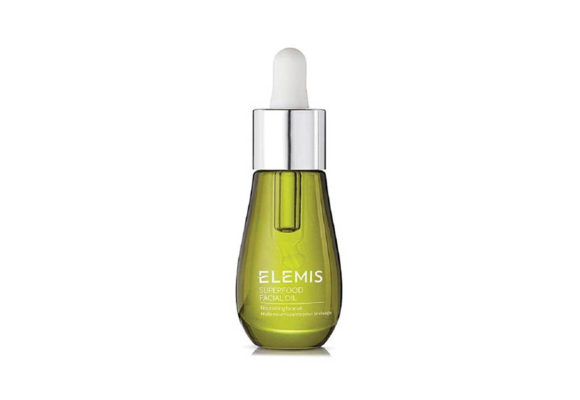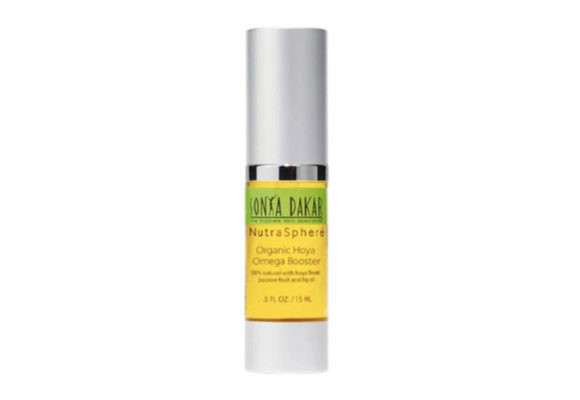
March 03, 2020 at 03:00AM by CWC
Putting flaxseeds in your smoothie is pretty much wellness 101. The seeds are packed with omega-3 fatty acids and are a rich source of nutrients that help your bod in day-to-day life—and as it happens, these wellness sprinkles also help your skin. Using flaxseed oil on your skin has legit, science-backed beauty benefits, and pros agree that it’s well worth integrating into your regular routine.
The ingredient can be used both orally and topically, and offers legitimate benefits through both delivery systems. “It has lubricating and anti-inflammatory properties, and I’m a big believer in the ingredient,” says celebrity esthetician Vicki Morav. To find out why, scroll through all of the benefits of flaxseed oil for skin, then test it out by adding it to your own routine.
What is flaxseed oil?
Flaxseed, otherwise known as linseed, is a blue flowering plant primarily grown in Canada. The benefits of flax have been utilized for thousands of years—the grain was among one of the first crops to be grown in human civilization, and historical texts show that people have been eating it since as early as 1200 BC. According to Ayurvedic principles, flaxseed has a number of different benefits including balancing skin pH, improving elasticity, treating dryness, and removing blemishes.
ADVERTISEMENT
ADVERTISEMENTKate Spade Autumn/Winter Sale |
Flaxseed is one of the richest plant-derived sources of omega-3 fatty acids on the planet. Omega-3s occur naturally in our bodies, and serve an important function for the health of our skin cells. We need them for a number of different cellular functions, but as far as our skin goes, they’re important for fighting inflammation and providing a nourishing lipid barrier.
The benefits of flaxseed oil for skin
Because of its richness in fatty acids, you can reap the benefits of flaxseed oil for skin both by eating it and applying it topically—but according to pros, one method reigns supreme. “Topically, [flaxseed oil is] really hard to absorb it because it has large molecules, so the skin doesn’t really take it all,” says Morav. Because of this, it can be good to incorporate it into your routine, both orally and topically. According to Moray, here are a few of the things that flaxseed oil can do for skin:
1. Hydrates and nourishes
While your skin might not be able to fully absorb flaxseed oil through its surface, there are still some benefits to applying it topically. “On the surface, it’s more of a soothing and hydrating ingredient—almost like a skin conditioner,” says Morav. She calls it a “soothing and softening” oil, which helps create a tighter, bouncier appearance in your complexion. Popping flaxseed in pill form is another way you can use it to boost hydration, because as Moray notes, it’s important to think about inside-out skin protection.
2. Reduces sensitivity and improves barrier function
Orally supplementing your flaxseed oil is a great way to get more of those good omega-3s into your skin cells, and the effects will help to create a stronger skin barrier. Need proof? In a small study from 2010, 13 women took flaxseed oil supplements for 12 weeks, and at the end of the experiment, they experienced smoother and more hydrated skin and less sensitivity to irritation.
Another study, in which mice were given flaxseed oil supplements for three weeks, found that they had decreased symptoms of atopic dermatitis like swelling, redness, and itching.
3. Fights inflammation
Flaxseed oil is known to fight inflammation in the gut, which can ultimately show itself on your skin. “It’s important to take flaxseed internally, because it’s an anti-inflammatory agent,” says Morav. Gut inflammation has been linked to skin conditions like rosacea, psoriasis, and acne, and some have said that taking flaxseed oil can help with these issues.
Who can use flaxseed oil for skin?
When it comes to applying flaxseed oil for skin topically, there are a few things to keep in mind. “People with dry and irritated skin would are the best candidates,” says Marius Morariu, a natural skin-care formulator and co-founder and CEO of Tracie Martyn Beauty and Wellness.
Because flaxseed oils molecules are large and sit on the surface of your skin (instead of being totally absorbed), they’re comedogenic and will eventually oxidize, which can ultimately lead to breakouts. If you’ve got acne-prone skin, you should be careful using it, though Morariu says you should be okay if the oil is highly refined and combined with other anti-acne botanicals.
The best way to integrate flaxseed oil for skin into your routine
There are plenty of products on the market that will allow you try flaxseed oil for your skin. Supplements are easy to find anywhere you buy groceries, but if you’re going to go topical there are a few things to keep in mind. Morav suggests using them alongside an oil high in linoleic acid, like evening primrose oil, antioxidants like green tea, vitamin C, and resveratrol, which work great with omega-3 oils and help protect them from oxidation and rancidity. You buy raw, unprocessed flaxseed oil (keep it in the fridge for best results), or try one of the skin-ready formulations below.
Elemis Superfood Facial Oil, $55

An antioxidant and omega-3 triple threat, flaxseed oil is combined with broccoli seed and daikon radish oils to help plump and smooth skin.
Sonya Dakar Organic Hoya Omega Booster, $62

Rich in omega-3s, 6s and 9s thanks to flaxseed and other botanical oils, this oil acts as an anti-inflammatory and treats skin dehydration and irritation.
Dr. Brandt Skincare Do Not Age with Dr. Brandt Time Defying Cream, $132

A thick cream instead of an oil, this moisturizer makes use of flaxseed oil for skin’s wrinkle-fighting properties. The ingredient is paired with amino acid peptides to help highlight the natural contours of your face.
ADVERTISEMENT
ADVERTISEMENTSports Direct Free Delivery on All Orders! |
Heres why hemp oil could be the natural ingredient your hair has been missing, plus what to look for (and what to stay away from) when shopping for face oils.
Author Zoe Weiner | Well and Good
Selected by CWC

ADVERTISEMENT
ADVERTISEMENTUp to 30% off Gift Sets |







